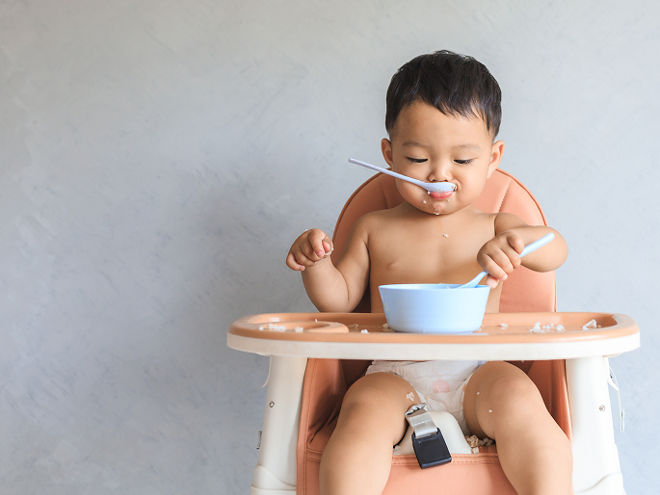
Tiny Taste Explorers: Creating a Curious Food Environment
Fostering Sensory Engagement, Joy, and Curiosity at Mealtimes
Babies are natural explorers, and mealtimes offer a wonderful opportunity to discover the world through touch, smell, color, and connection.
When food is approached as something to explore—not perform—babies learn with curiosity, not pressure.
Every mealtime moment is a chance to build confidence, spark joy, and create comfort around food.
Encouraging Exploration Without Pressure
A. Let Curiosity Lead
Babies don’t need to eat right away to learn. Let them look, touch, mash, and smell before expecting a bite. Hands-on exploration helps them feel safe and familiar with what’s in front of them.
B. Keep the Mood Relaxed
Skip the pressure to finish a plate or try every item. A calm environment, gentle encouragement, and a few smiles go a long way toward helping your baby enjoy the experience.
The Role of the Senses in Food Discovery
A. Touch and Texture
Soft, bumpy, smooth, or sticky—these textures teach babies about the world. Let them poke, squish, or pick things up to learn through their fingertips.
B. Sight and Color
Bright colors capture attention. Offering variety on the plate can turn mealtime into a mini visual adventure. Use small portions and playful presentation to keep curiosity alive.
C. Smell and Sound
Introduce new smells by holding food close to baby’s nose and reacting together—“Smells sweet!” or “That’s crunchy!” These experiences boost awareness and add another layer to sensory learning.
Creating a Positive Mealtime Atmosphere
A. Model Engagement and Excitement
Your baby is watching and learning from you. Smile, show interest in your own food, and include baby in mealtime chatter to make them feel part of the experience.
B. Offer Repetition Without Expectation
Babies may need to see something many times before interacting with it. Each exposure is progress, even if it’s just a glance or a tap.
Making Mealtimes Meaningful
A. Keep it Fun
Use playful mealtime moments, like naming colors or singing songs, to keep interest high. A lighthearted approach makes the table a place of joy and exploration.
B. Let Baby Take the Lead
Support self-feeding, even if it’s messy. Let your baby hold the spoon, pick up food, or simply play. Each attempt builds confidence and motor skills.
Supporting Exploration Through Family Routines
A. Mealtime Togetherness
Eat together when possible. Babies learn not just from their own experience, but from watching yours. Mealtimes can be moments of bonding, connection, and shared discovery.
B. Simple Food Prep Involvement
For older babies, helping with simple tasks like “placing” food on a plate can build excitement. These small responsibilities increase engagement and make mealtime feel like teamwork.
Final Thoughts
Food isn’t just about eating—it’s your baby’s gateway to discovery.
By making meals playful, pressure-free, and full of sensory experiences, you’re helping your baby build confidence, connection, and curiosity.
These early moments become lasting memories and a strong foundation for a lifelong love of learning.









